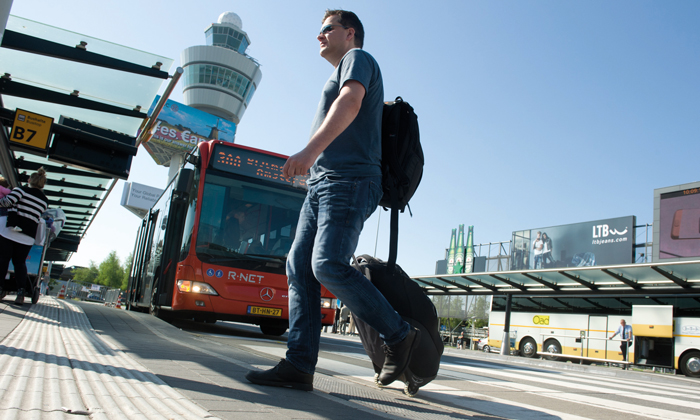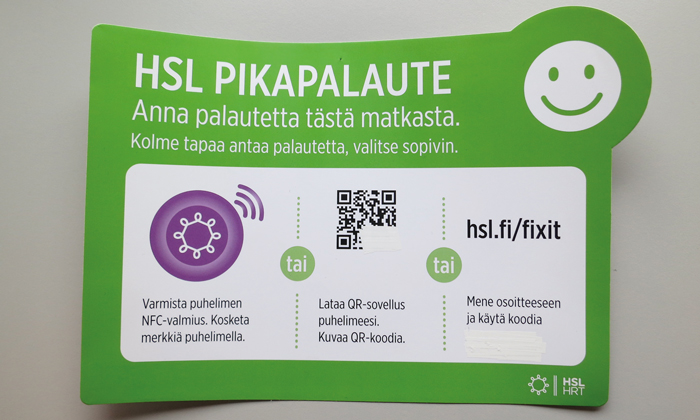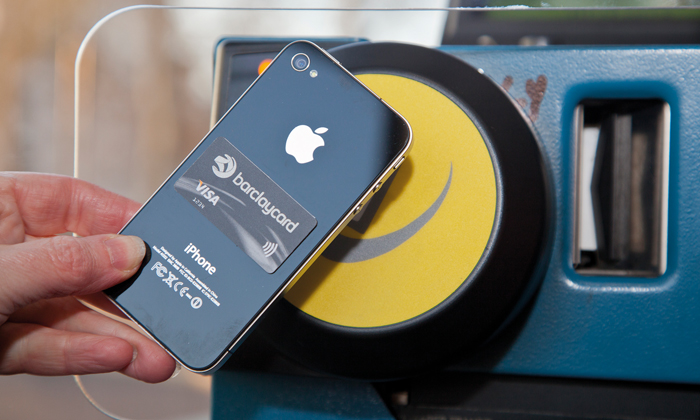The UX-factor: enhancing digital customer dialogue
- Like
- Digg
- Del
- Tumblr
- VKontakte
- Buffer
- Love This
- Odnoklassniki
- Meneame
- Blogger
- Amazon
- Yahoo Mail
- Gmail
- AOL
- Newsvine
- HackerNews
- Evernote
- MySpace
- Mail.ru
- Viadeo
- Line
- Comments
- Yummly
- SMS
- Viber
- Telegram
- Subscribe
- Skype
- Facebook Messenger
- Kakao
- LiveJournal
- Yammer
- Edgar
- Fintel
- Mix
- Instapaper
- Copy Link
Posted: 20 August 2017 | Ruud van der Ploeg - European Metropolitan Transport Authorities | No comments yet
Ruud van der Ploeg, Secretary General of the European Metropolitan Transport Authorities (EMTA), explains why identifying passenger needs and focusing on user experience will help determine the future success of smart ticketing technology and Mobility-as-a-Service.


The combined passenger mobility needs puts government and local authorities under strain to adopt a new role as integrated mobility facilitators.
There is increasing impetus to move away from the mere delivery of a high-quality service, toward capturing information for the benefit of passengers to access via trustworthy apps that support their individual needs.
This will enable users to utilise not just one transport mode, but combine interlinked modes into a chain of mobility.
Customer-centric solutions are becoming increasingly reliant on the emerging Internet of Things and web-based tools. Public transport supply needs a highly motivated and qualified staff that carry a genuine drive to create better services and stay in tune with volatile customer behaviour patterns.
Acknowledging passenger needs
Assessing key user requirements has been the subject of many studies. Providing a reliable service at an affordable price, run by a safe and easily accessible vehicle at a consistent level of quality, are key ingredients to creating a good user experience.
Real-time information with secure and easy payment methods are additional key user needs. The use of new and emerging data sources helps travellers to make better informed choices about their journey, as it assists transport planners to make better decisions on how to run their network.
The wide spread availability of new vehicle technologies for buses, individual cars, mopeds, and even bikes, allows authorities to make combined travel offerings that are greener, cleaner and better connected.


The Helsinki Regional Transport Authority’s Digital Dialogue scheme has encouraged a dramatic 62 per cent increase in positive customer feedback
Smart and contactless payment
For a long time, public transport has been considered as a little slow on introducing open loop payment, and in most cities today users still need to buy a single ticket upfront to be validated. Ease of payment by online or open loop payment will diminish the risks of losing money and data safety. It helps to make public transport a competitive alternative to the private car.
The evolution of cashless pay-as-you-go ticketing was propelled by the Oyster in London in 2003 and constituted a big step forward in ease of pay. Moving from paper tickets to electronic bank cards, smartphone or smart watch makes for easy access and better comfort. The launch of the contactless card on the London Underground in September 2014 also marked an important step towards smart and safe payment. Over 2 million journeys are made on the Tube daily by using contactless payments and around 40 per cent of pay-as-you-go journeys are made using a bank card – and that figure is still rising.
Over 24 million cards from 100 countries have been used on London’s transport network and it isn’t hard to imagine what this has done to ease movement around London for international visitors. Some individual stations have 60 per cent of pay-as-you-go journeys on contactless, while approximately nine per cent of contactless journeys are made using a mobile payment device (Apple Pay, Android Pay, etc).
Transport for London succeeded in cutting costs for revenue collection from 14 per cent to nine per cent per pound, with clear opportunities to better this in the future. The real quandary, however, is why open loop and contactless technology, which offers great advantages for both users and providers, is taking so long to copy elsewhere.
Digital dialogue
Innovators using digitalisation to enhance the user experience tend to breathe Nordic air: HSL (Helsinki Regional Transport Authority) leads the way. Since HSL introduced Digital Dialogue, driving communication between customers, authorities and operators, positive customer feedback went up from six per cent to 68 per cent. Instant feedback helps to improve understanding between users, HSL and its operators and supports co-creation of good services. The tool to select a medium for feedback in the system is stickered on the back of the seat in front.
All it takes is a charged mobile device with internet access. Imagine how you’d feel if your feedback is ‘instantly’ replied to and acknowledged by the recipient and includes an indication of when your comment will be answered. Instant gratification and a sense of shared responsibility for running the communal transport system encourages users to give feedback in situations that warrant it.
On ticketless payment and online information, Ruter (the transport authority in Oslo) launched two lauded apps honoured with the Nordic Marketing Award: ‘RUTER Billett’ allows the quick purchase of tickets for anyone that has a bank account (including tourists and visitors that want to pay as they go into the city), while ‘RUTER Reise’ provides real-time travel information before and during a trip.
A pilot to introduce contactless payment in 2010 was deemed inadequate by users, leading to Ruter designing a simple two-step payment system instead. This is an exemplary example of a well thought out use of the UX-factor to co-create easier access to public transport.


Fourty per cent of pay-as-you-go journeys are made using a bank card on the London Underground
Mobility-as-a-Service
Will Mobility-as-a-Service revolutionise the public transport market by changing the experience of smart travel? The strength of the chain offered to the consumer makes for a seamless travel experience and determines whether users are prepared to keep faith in multimodal package solutions. The personalised approach of MaaS brokerage holds the promise that travellers can sign up for packages of mobility for all travel modes to plan trips, make a journey and pay in one go.
The success of MaaS will depend on trust that online brokers manage to create from the online user community, and seamless quality of combined services is key. MaaS will not instantly impact user behaviour, though. Millennials are surely familiar with apps and will be one of the first to be targeted by the marketing of MaaS concepts. In Helsinki, the MaaS pilot that began in October 2016 has had a promising start. The concept of Whim (from parent company MaaS Global) is expected to function well. The real niche for MaaS could be in the combination of first- and last mile-solutions and demand responsive supply.
Whim will be launched in the West Midlands in October 2017 with support from National Express as the major operator in the area, along with major rail providers. By December 2017 the Whim concept will be embedded in the contract for public transport in the Amsterdam Schiphol area. Operator TransdevNL/Connexxion has taken a share in MaaS Global and if this buy-in by a major European player is supportive, the emerging potential of this concept will soon be clear.
Some issues, however, are yet to be clarified: what happens when the shared trip fails to make the connection to the next stage of a passenger’s journey? Who bears liability for damages from not delivering the offered package as booked? It seems fair to assume that the online supplier also carries a liability for missed connections, so should every broker have insurance for that? In online multimodal reservations, users should be able to gauge the scope of the contracted service to assess what parts of a journey are covered by the brokered online contract.
User experience and trust in the service will initially remain fragile, though a standard for certification of brokered services could help to establish mainstream acceptance.
Listening to users’ wishes and needs is key to the success for applications on payment or access to tailored and personalised services. A new level of flexibility to improve customer service is needed. It will be worth evaluating if – once matured – Mobility-as-a-Service will trump car use and, as some claim, diminish the need for car ownership in urban areas.
Biography


Related topics
Passenger Experience, Ticketing & Payments
Issue
Issue 4 2017
Related organisations
European Metropolitan Transport Authorities (EMTA)
Related people
Ruud van der Ploeg








